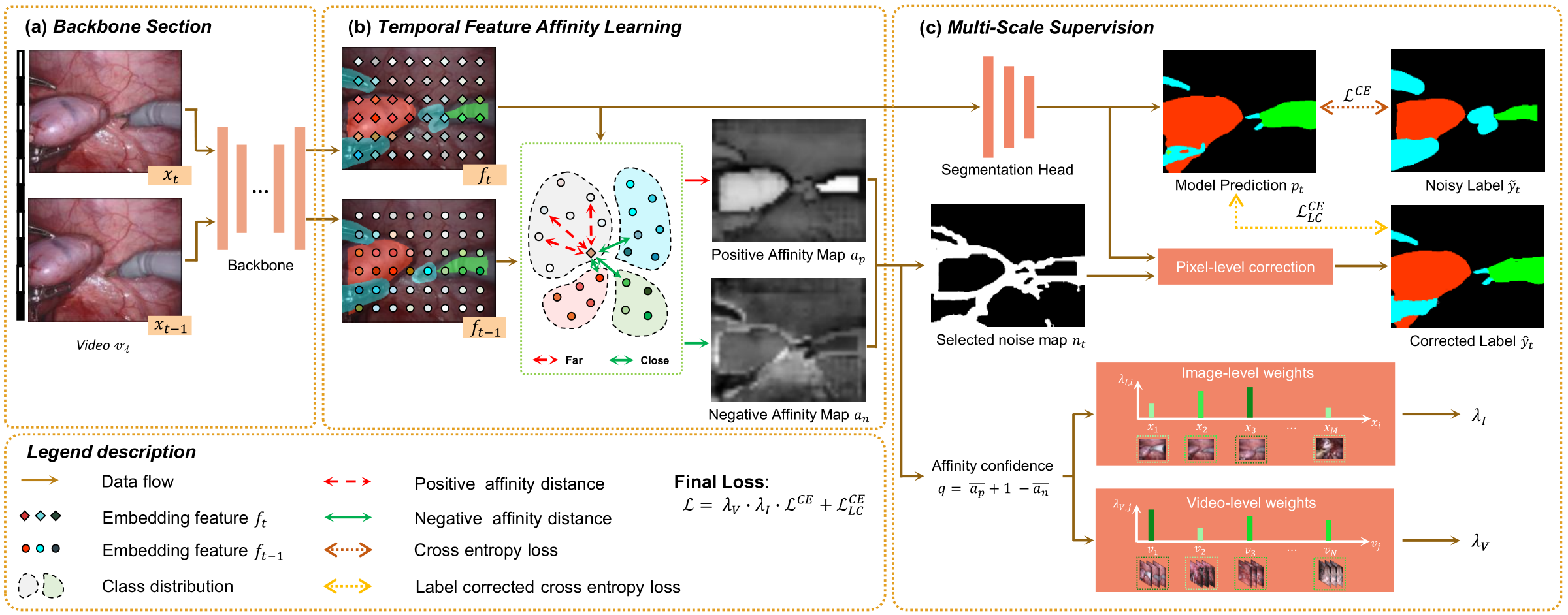Rectifying Noisy Labels with Sequential Prior: Multi-Scale Temporal Feature Affinity Learning for Robust Video Segmentation
Noisy label problems are inevitably in existence within medical image segmentation causing severe performance degradation. Previous segmentation methods for noisy label problems only utilize a single image while the potential of leveraging the correlation between images has been overlooked. Especially for video segmentation, adjacent frames contain rich contextual information beneficial in cognizing noisy labels. Based on two insights, we propose a Multi-Scale Temporal Feature Affinity Learning (MS-TFAL) framework to resolve noisy-labeled medical video segmentation issues. First, we argue the sequential prior of videos is an effective reference, i.e., pixel-level features from adjacent frames are close in distance for the same class and far in distance otherwise. Therefore, Temporal Feature Affinity Learning (TFAL) is devised to indicate possible noisy labels by evaluating the affinity between pixels in two adjacent frames. We also notice that the noise distribution exhibits considerable variations across video, image, and pixel levels. In this way, we introduce Multi-Scale Supervision (MSS) to supervise the network from three different perspectives by re-weighting and refining the samples. This design enables the network to concentrate on clean samples in a coarse-to-fine manner. Experiments with both synthetic and real-world label noise demonstrate that our method outperforms recent state-of-the-art robust segmentation approaches. Code is available at https://github.com/BeileiCui/MS-TFAL.
PDF Abstract



